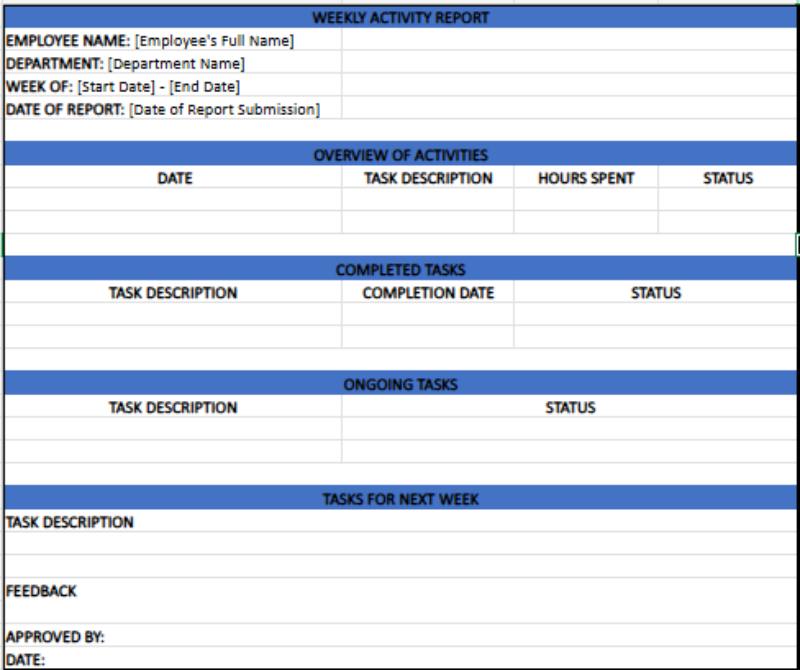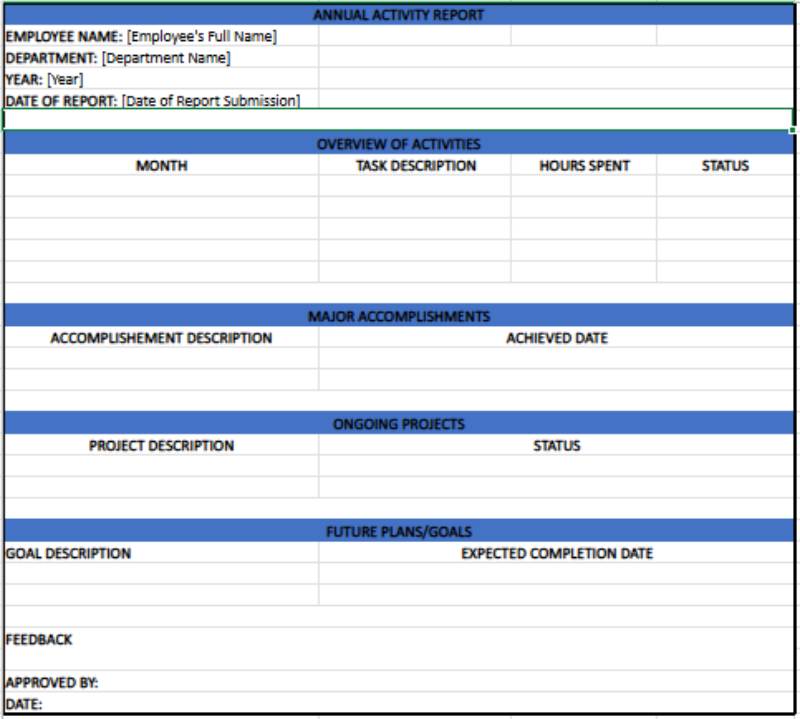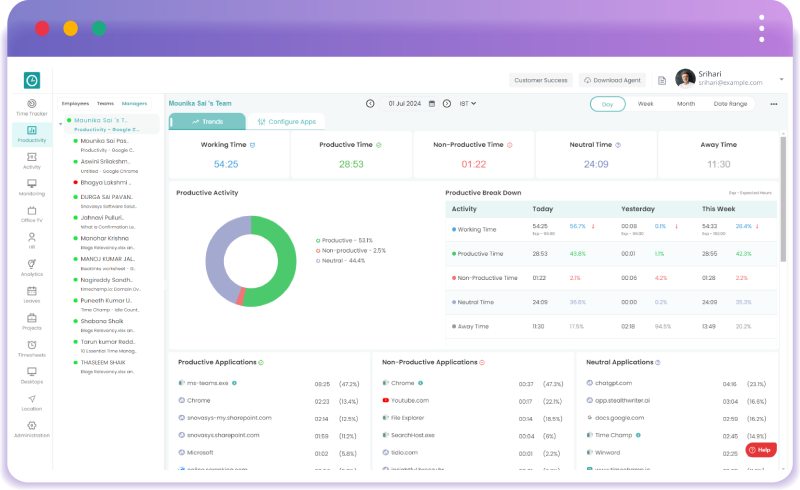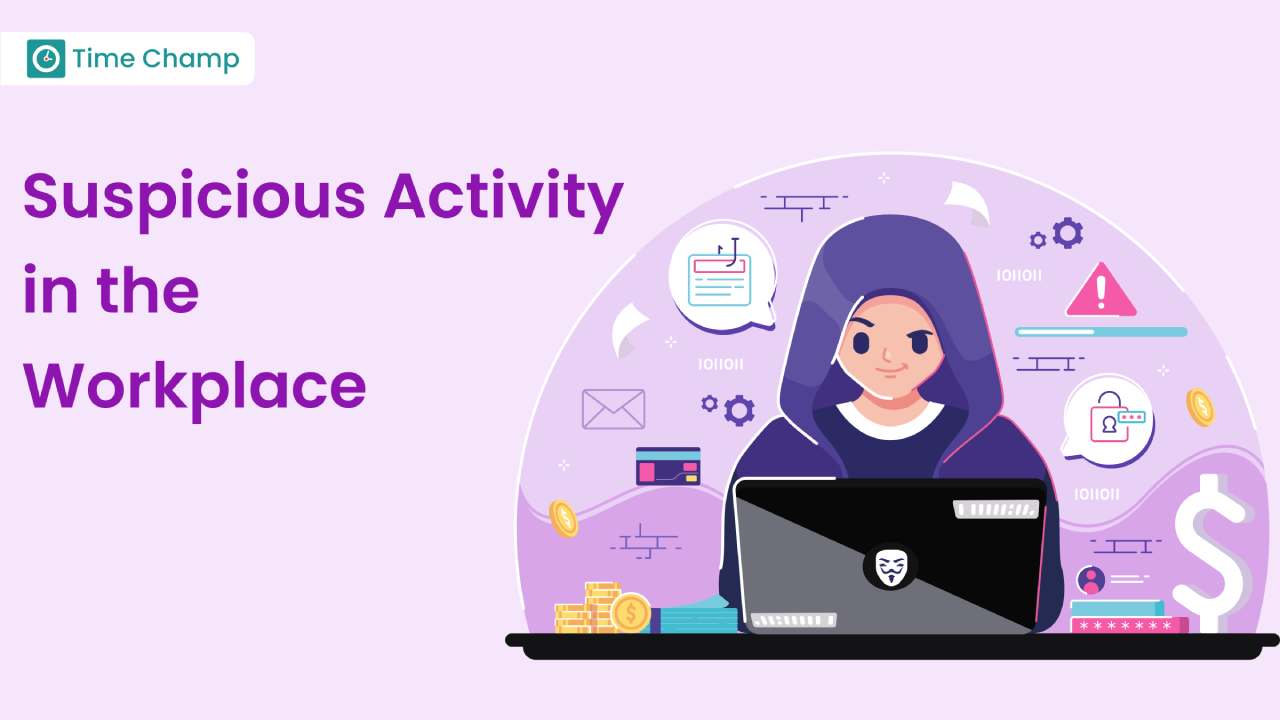In the current business world, it is crucial to have a proper understanding of the employees’ performance and efficiency. The employee activity report is one of the most enlightening and effective of all the tools that enable organizations to achieve their goals. In this blog, we discuss how these reports help businesses improve performance, increase transparency, and promote a culture of performance.
What is an Employee Activity Report?
An employee activity report outlines the activities of an employee during working hours. Managers use employee activity reports to assess the performance of the employees, determine where they are lacking, and decide on the best way to increase productivity and efficiency among the employees. These reports can be useful in understanding different aspects of employees’ work including efficiency, effectiveness, use of resources, and possible deficiencies in skills.
Why is an Employee Activity Report Important?
According to research done by Deloitte, it was found that 65% of the leading organizations use analytics in employee management. Such insights are obtained from the employee activity reports essential in strategic workforce planning and performance improvement.
Below are the steps that explain the significance of these activity reports.
- Performance Evaluation: It can be used as an overall measure to evaluate the performance of an individual or a group. Through documenting the activities done, time spent, and accomplishments made, managers can understand how much the employees are contributing towards the achievement of organizational objectives.
- Productivity Measurement: These reports assist in evaluating and comparing the productivity of the employees. Measuring time spent on tasks and projects helps to determine inefficiencies, delays, and potential improvements that can be made to increase organizational efficiency.
- Data-Driven Decision Making: Activity reports are important for decision-making as they contain information about the employees. Through the assessment of the data contained in these reports, organizations can determine trends, patterns, and areas of strength and weakness that enable them to make informed decisions about the workforce to achieve the best results.
- Goal Alignment: Activity reports of employees help synchronize the work done by them and the organization’s goals. Through monitoring the activities and the results of the employees, organizations can determine if the employees are aligned with the organizational objectives and goals and take corrective measures if the need arises.
- Accountability and Development: Employee activity reports enhance accountability since they provide detailed information on the work done and the outcomes achieved by the employees. They also allow for more specific feedback and follow-up based on the received feedback, which in turn helps managers assist employees in enhancing their performance and recognizing areas for further training and development.
What Information is Included in an Employee Activity Report?
Have you thought about what information is included in the employee activity report? Well, in addition to tasks and project deadlines, these reports focus on interruptions, time spent, and productivity rates. It is like unveiling the secret of productivity!
Albert Einstein once said, “Not everything that can be counted counts, and not everything that counts can be counted”. This statement is true when one tries to decipher the details of employee activity reports. Let’s dive in!
- Employee Information: This section contains information about the employee including name, position, department, and any other identification number.
- Activity Overview: A brief report of the employees’ activities in a week or a month. This may involve the division of activities accomplished, projects completed, and efficiency rates.
- Time Tracking: Information on the amount of time taken to perform different activities or assignments. This can assist in determining how time is spent in a day and if any gaps could be optimized.
- Tasks Completed: A list of tasks or projects performed by the employee during the reporting period. This can be both regular tasks and activities related to a particular project.
- Goals and Objectives: Details of the employee’s performance about the set goals and objectives for the reporting period. This helps determine each employee’s contribution to achieve overall organizational objectives.
- Key Performance Indicators (KPIs): Other measures related to the employee’s position, performance, and efficiency. This can be in the form of figures like sales, customer engagements, or project deliverables among others.
- Feedback and Comments: An area for managers or supervisors to give their opinion on the employee’s performance and suggest ways on how the employee can improve or areas in which the employee has excelled.
- Training and Development Needs: Determination of any training or development requirements that may be required depending on the employee’s performance and the areas of weakness.
- Attendance and Leave Information: Records of the employee’s attendance, the time off he or she has taken, and any other information that may be relevant to the employee’s schedule and time off.
How to Create an Effective Employee Activity Report?
Several steps needed to be followed to create an efficient employee activity report so that it would be helpful for both the employee and the employer.
Below are some tips that can assist you in developing a good report.
- Define Clear Objectives: It is necessary to determine the goals of the employee activity report. Decide which measures, indicators, and actions you want to monitor and assess about the organization’s goals.
- Select Relevant Data: Determine which data and information are critical and should be included in the report. This may include time spent on various activities, tasks accomplished, project status, and other relevant performance measures that relate to the employee’s position.
- Use a Consistent Format: It is also important to set a standard format for the reports so that the document is easy to understand. It is recommended to have sections for basic information like employee details, activity descriptions, time logs, goals, feedback, and training requirements.
- Automated Data Collection: Use technology and software to help collect data for the report. This can help in simplifying the reporting process, minimize the number of errors that may occur, and increase the accuracy of the data.
- Include Visuals: Ensure that performance data and trends are presented in charts, graphs, and other visual formats to facilitate understanding. Visuals can enhance the understanding of the information presented by the employees and managers.
- Provide Actionable Feedback: Incorporate feedback and comments in the activity reports to provide actionable insights for improvement and recognition of achievements by employees. Specific, constructive, feedback that is aligned with organizational goals must be provided.
How To Analyze Employee Activity Reports?
Activity reports are very useful in understanding the productivity of employees, but how one interprets them is very important. Here are essential tips to ensure you derive maximum benefit from these reports:
- Spotting Trends: The first step is to look for trends in the reports. Thus, by analyzing the patterns of the employees’ activities, you will be able to differentiate between the consistently productive employees and those who may be underperforming.
- Monitoring Productivity Fluctuations: Pay attention to changes in productivity rates. Such changes could arise from a workload change or any other personal issues. Knowing these changes is important because it enables you to address the causes of the changes as early as possible.
- Evaluating Workloads: Check the activity reports to see how much work the employees have been doing. If an employee is always engaging in activities that are not expected of him or her, then this may be a sign that there is a problem that needs to be solved.
- Comparing Activity Levels: Carry out a comparative analysis of the activities of the employees on board. Comparing the productivity of one employee to another makes it easier to identify the best workers and the poor performers.
- Pinpointing Improvement Areas: While reading through the reports, identify specific areas that the employees can improve. In this way, one can identify the areas of weakness and come up with specific measures that can be taken to improve the productivity and efficiency of the workforce.
How Often Should Employee Activity Reports Be Generated?
Unlocked the secrets of employee activity reports? Great! Now you might be wondering, how often should you check them? Daily blasts of data? Weekly summaries? This section cracks the code on the ideal report frequency to stay in tune with your team’s performance and fuel their success.
Daily Reports: Daily reports give information on what employees are doing daily, which is important for service and sales employees.
Weekly Reports: Provide a summary of the employee’s activities and accomplishments, allowing the manager to assess the weekly objectives, challenges, and feedback for performance enhancement efficiently.

Monthly Reports: Monthly reports give a more general view of the employees’ performance over one month. It helps monitor the performance concerning the monthly objectives, assessing the general performance pattern, and establishing the performance benchmarks for the next month.

Annual Reports: These are the summary of the performance, goals, development, and contributions of the employees for one year. They play a crucial role in the annual performance reviews, strategic planning, and celebration of major milestones.

Employee Performance Reviews vs Employee Activity Reports
While the employee performance reviews and the employee activity reports are different in their function, they are also closely related to evaluating and monitoring the performance of employees in an organization. Performance reviews give a broad view of an employee’s performance and development, activity reports give a detailed view of the daily work and efficiency. Both tools are useful in performance management as they provide a more comprehensive perspective of the employee’s performance, help in the formulation of feedback and development discussions, and help in the promotion of performance improvement culture in the organization.
Employee Activity Tracking with Time Champ
Time Champ is an activity-tracking software used to track and quantify employee performance to increase productivity in organizations. It offers comprehensive reports on different aspects of the employees’ activities such as time taken on the tasks, the progress of the projects, the applications, and websites visited. These reports are useful for the managers to make the right decisions and improve the team’s efficiency. Give Time Champ a shot now to increase efficiency in your employee activity tracking and reporting.
Here is a template outlining the structure for employee activity reports

Conclusion
Employee activity reports are useful in improving performance, accountability, and clarity. It is important to review employee activities frequently to ensure they align with organizational goals and objectives, reward the employees, and note the areas that need to be corrected. These reports are very useful as they offer information that can be used to make better decisions that will help to improve productivity and efficiency for the success of the business.
Start leveraging employee activity reports today to enhance productivity and ensure your team is always on track!
Signup for FreeBook DemoFrequently Asked Questions
Assist in defining the productivity of people and teams, contribute to the evaluation of their efficiency, enhance the level of transparency, encourage the application of numerical data in decision-making, and raise accountability in organizations.
Some of the main elements are employee details, activity descriptions, time logs, performance indicators, feedback, and future objectives.
Some common challenges are related to data collection, employee resistance, privacy and confidentiality, information overload, and variability of organizational requirements.
Reports are useful since they provide a clear picture of the performance of individuals and teams, help in the process of performance appraisal, help in the identification of problems and opportunities, assist in decision-making, and improve organizational productivity and efficiency.







